Residential elevators are a great way to reduce falls and help seniors age in place. This guide will help you understand residential elevators for seniors.
Contents
Seniors will agree that aging is not fun and exciting as it brings a lot of changes in their lives. These changes are physical, emotional, and mental. It depends on your ability to adapt and change on how well you will cope with these changes.
Seniors in America come from a generation that has a unique sense of pride in their freedom, they are very protective of this freedom, and they don’t want to lose it.
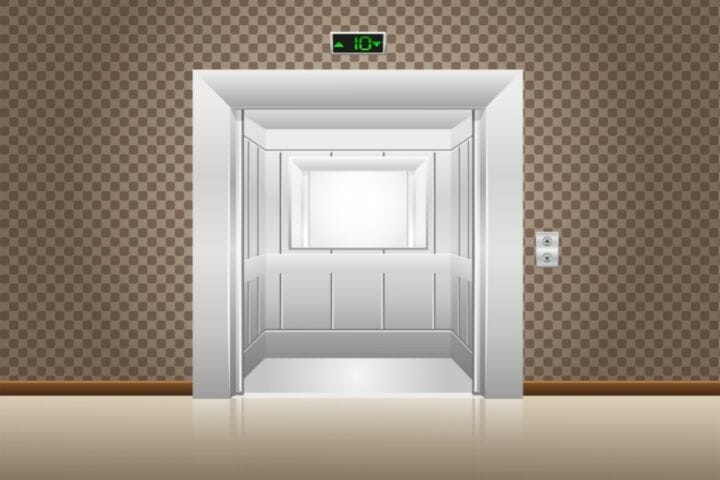
Aging can weaken the body and introduce many mobility issues in the body. 61 million people living in America are living with some disability. More importantly, weakness in joints and muscles can lead to seniors falling down and injuring themselves. Every year 3mn older adults are admitted to ER due to serious fall-related injuries.
Out of this number, 13.7% of the people have mobility issues. Residential elevators are ideal mobility aid devices that will improve the quality of living for seniors. This article is a complete guide to residential elevators for seniors.
Why Do You Need Residential Elevators?
As they grow up, seniors feel pain in their muscles and joints. Climbing up and down the stairs exerts a lot of pressure on the joints. There are 58.5 million people in America that have arthritis. Arthritis is a medical condition in which joints in your body suffer from inflammation.
Arthritis is a condition that develops with age. Due to this condition, the stiffness in the joints increases. Most of the time, arthritis is also accompanied by pain. Patients suffering from this condition should avoid causing physical strain on their joints.
Residential elevators will increase the mobility of the seniors throughout their home; this will make them self-dependent to do their household chores. There are other benefits of using such elevators, such as they are easy to use, environment-friendly, noiseless, and so on.
Benefits of Residential Elevators
Residential elevators have the following benefits:-
Residential elevators are secure
Residential elevators are designed with seniors in mind. They help you avoid stairs, thus reducing a major cause of fall related injuries. On top of that these elevators are equipped with equipment that make them safe for use.
Modern day residential elevators come with power-backup which is essential in times of blizzards and hurricanes, when there are power outages. Seniors can travel down to lower floors in these elevators and exit the building quickly.
Some of these residential elevators also come equipped with telephones so that you can talk to your caregivers or family members in case of emergencies.
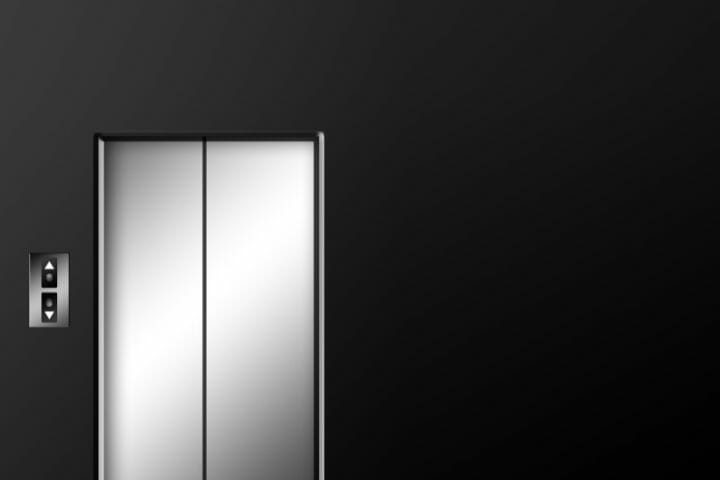
Residential elevators are user-friendly
Residential elevators can be controlled easily with simple controls that seniors can easily comprehend. Many modern residential elevators have a touch panel with easy-to-read buttons and labels.
You can also go for residential elevators with a gearless motor; gearless motors don’t stutter in between and ensure a smooth and comfortable ride.
Residential elevators are stylish
You can even customize a residential elevator to fit the shape and size of your home. You can fully customize these lifts from their interior to their exterior. If your home has a residential elevator installed, then the monetary value of your home will also rise.
Types Of Residential Elevators You Can Install In Your Home
Residential elevators can be majorly classified into two types. The first is electric residential elevators, and the second is mechanical residential elevators. The section below will help you understand which of these is more suited for your purpose.
Electric Residential Elevators
Electric residential elevators are further classified into the following types:-
Eclipse elevators
This type of residential elevator is ideal for homes that are not too big and only have limited space for installing a residential elevator. These elevators are suitable for such houses as they will give the seniors access to all rooms and corners of the home.
The eclipse elevator is wide enough to fit a wheelchair inside it without any hassle easily. Patients with other mobility aid devices such as walkers and rollators can also use this elevator.
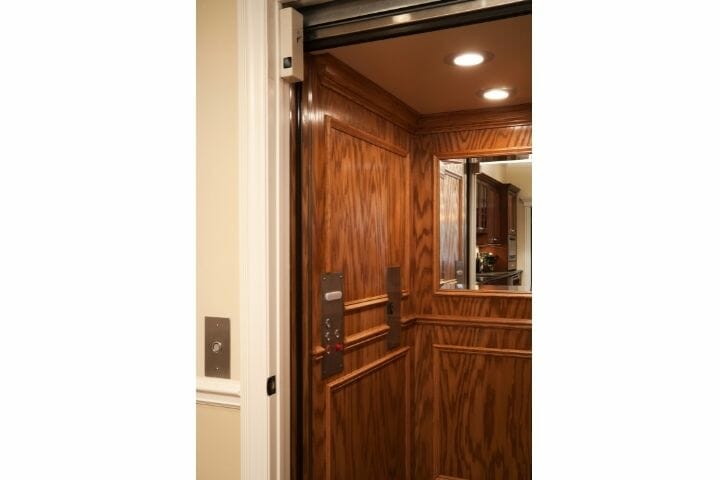
Electric elevator
This residential elevator operates on electricity, and it runs on a counterweight. This counterweight is responsible for balancing the cab in the shaft. Suspended elevators can exert more pressure on the back of the senior since they go down more quickly.
Sometimes the suspension makes the elderly vulnerable while using the elevator. Electric elevators are environment friendly as they don’t run on any fossil fuel or oil. People who live in areas prone to natural calamities such as earthquakes, tremors, and so on should consider this type of elevator for their homes.
Hydraulic elevator
Hydraulic elevators are common in households that have seniors in them. For areas that are prone to hurricanes and tornadoes, hydraulic elevators are the best as they have a separate machine room, usually in the basement.
This separate machine room is ideal for power-backup. You can customize this machine room according to the size of your basement. Households with smaller basements can also use their attic to keep the machine. Hydraulic elevators move because of water movement from one chamber to another, creating pressure that moves the elevators.
Pneumatic elevator:
Pneumatic elevators are in some ways similar to hydraulic elevators. You will not find a separate machine room with this elevator. At the same time, this type of lift has a pneumatic vacuum room.
This vacuum room is much smaller in comparison to a large machine room. A smaller vacuum room will also result in less installation cost than a hydraulic elevator. The capacity of a pneumatic lift is at max one or two. On the other hand, a hydraulic elevator has more capacity.
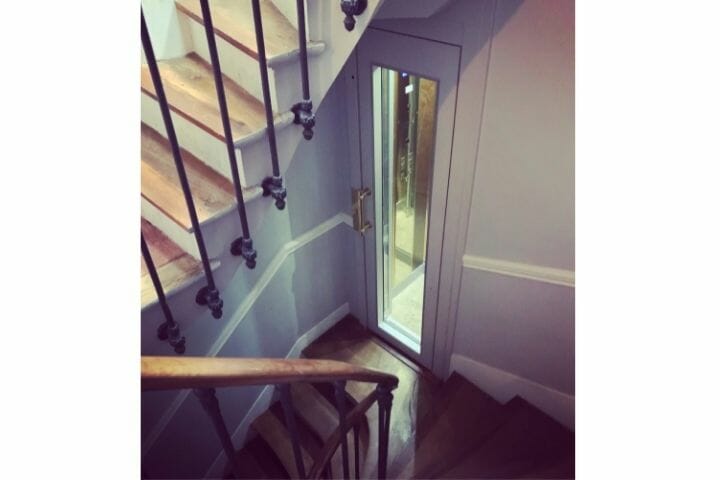
Overhead winding room elevator
This type of elevator is popular among people that are green enthusiasts. This winding room elevator operates without any fuel or oil. There is no additional machine room required for this elevator.
So you can install this elevator for homes that have limited space. Most of the time, the cab for such elevators is fitted on the house’s roof. There is also no additional counterweight that allows the movement of the elevator. Generally, the elevators that don’t use a counterweight are considered safer.
Mechanical Residential Elevators
Mechanical residential elevators are perfect for seniors who find it challenging for themselves to climb up and down the stairs. People that have trouble transferring themselves from the wheelchair to the chairlift should use these residential elevators.
The chairlift
This is the most common mechanical residential elevator that seniors use regularly. If you live in a multiple-story house, the chairlift is ideal for your home. The primary function of this elevator is to let seniors sit on them and take them up and down the stairs in their homes.
You will need to attach this chairlift to the bottom part of the staircase. The chair attached to this lift is usually quite comfortable. Seniors can sit on it and secure themselves. Thus, the chairlift offers dual security for seniors.
If your staircase is narrow, you might have some trouble as the chairlift might occupy most space on the stairs. If the foundation of the staircase is old and not sturdy enough, then this chairlift elevator will be too heavy for the stairs.
Personal elevator
Personal elevators are ideal for people that are injured or disabled. People with old age find it difficult to move around the stairs. Installing a personal elevator is also not very costly, but it can only accommodate 1-2 people
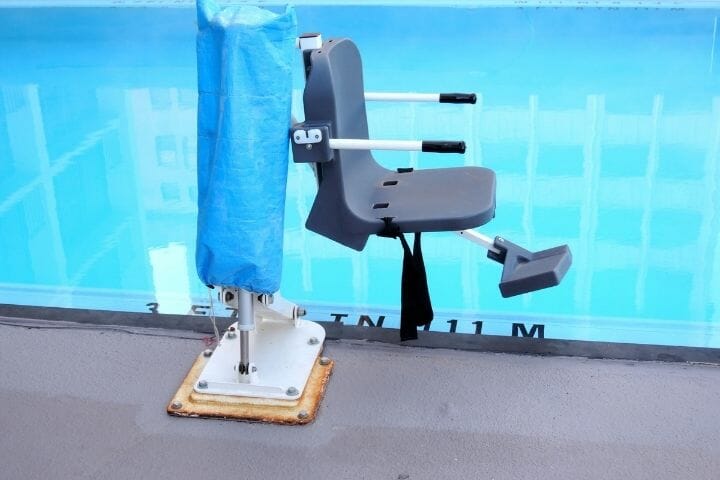
Wheelchair platform lift
Taking out the seniors for a walk or stroll is essential for freshening their minds and providing them with a change of scenery. People that are restricted to wheelchairs are not able to do so.
With a wheelchair platform lift, you will be able to roll the wheelchair onto the platform stairlift. Then you will need to press a button that allows the person to move up and down the porches and sidewalks.
Stair elevator
A stairlift or elevator is similar to a chairlift. This elevator is ideal for carrying the chairs up and down the stairways.
Ceiling lift
A ceiling lift is ideal for people that have trouble getting in and out of bed. People in their wheelchairs moving up and down onto the bed are helpful. A ceiling lift is usually fitted in just one room, the bedroom. Using this lift for people with limited mobility is a great idea.
Pool lift
This is a lift for the seniors that love to enjoy and spend their time at the pool. In some ways, a pool lift is similar to a chairlift. The significant difference between them is that a pool lift is made from water-resistant material.
This lift also comes with a chair that will help you transfer the senior from their wheelchair to the pool and vice versa.
Hoyer lift
A Hoyer lift is a portable mobility device. This type of elevator eases the movement or transfer of the people restricted to a wheelchair. This lift has unique wheels attached to it.
These are the wheels that make this Hoyer lift portable. You will be able to move this lift to other rooms as well.
Dumbwaiter lift
This type of elevator is essential for moving heavy objects from one place to another, generally up and down the stairs.
This is a manual lift that the seniors can use for transferring meals, laundry, moving dishes, or cutlery to their caregivers. Installing a dumbwaiter lift is not for the person’s mobility but the mobility of essential items. If the patient is bedridden, then this lift is ideal for them.
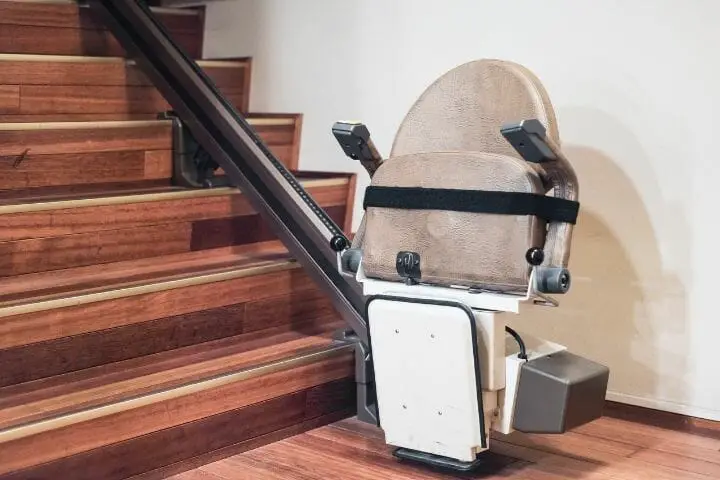
Bathtub lift
This type of elevator is ideal for people with mobility issues and who cannot take a bath. A bathtub lift is mostly battery-operated. This lift operates as it lifts the elderly from the wheelchair and places them in the bathtub and vice versa. You can also move away from this lift when other people want to use the bathtub.
Choose The Ideal Residential Elevator For Your Home
Choose the correct location for the elevator in the home
Before you install a residential elevator in your home, you must decide the ideal location for the elevator. To determine the perfect location, you must also figure out the style of the elevator you want.
As different elevators have different styles and different space requirements. For instance, if your home has a narrow space, you should probably not go for a hydraulic elevator as it requires a machine room.
Pick a cab style
The next step is to identify the perfect cab style for the elevator. With the cab style, you will get to know the layout of the entire lift and the elevator.
You can also customize the lift
Now you also have the option to customize the lift. There are other parts of an elevator, such as the electric panels. Suppose you want the elevator to match your house’s interior or exterior. In that case, you can also customize your lift from selecting the wooden interiors to choosing the interior lights.
Factors To Consider While Purchasing A Residential Elevator
- The size of your home: You need to consider the size of your home before you select one home. Depending on whether your home is small or big, you will need to decide on the size of the residential elevator.
- The elevator’s cost: The elevator’s price will also play a significant role in deciding the ideal residential elevator for your home. You will need to consider two types of costs here. The first type of cost is the long-term cost that includes installation cost and the purchasing cost for the list. The second type of cost is the running or operating cost. If your elevator is running on oil, then your operating cost will be pretty high.
- To consider the needs of the patients: The next step for you is to consider the needs of your seniors. If the older adult can get up and move around, then a lift that can move them up and down the stairs is ideal. On the other hand, if your senior is restricted to a wheelchair, you may need to go for a platform lift.
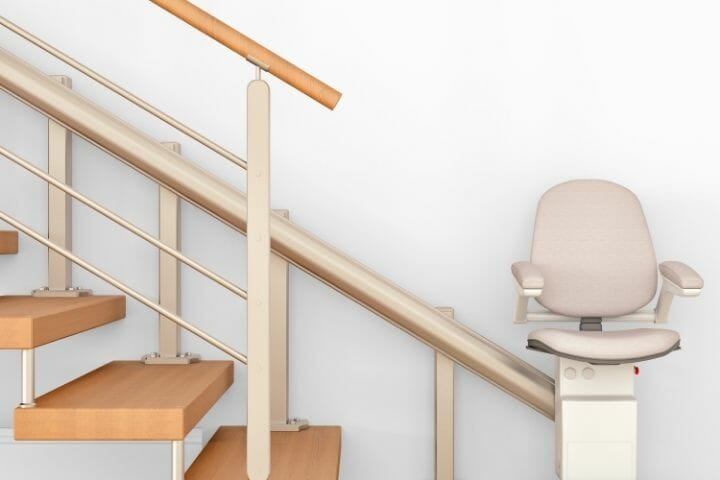
To Summarize
A residential elevator can make your life simpler if you have mobility issues. It will not only enhance your safety but also make you independent. It can also help you move heavy loads up and down floors, which is very unsafe for older adults.
This article is a guide for you to purchase residential elevators. Choosing the right elevator for your home is ideal and depends on many things, such as the size of your home or the person’s needs.
We hope that the information shared here will help you make the right choice about the kind of residential elevator you should install in your home. If you have further queries, you can drop us a comment below and we will get back to you. Lastly, if you liked the content, please do not forget to like and share it with others on your social media handles.
